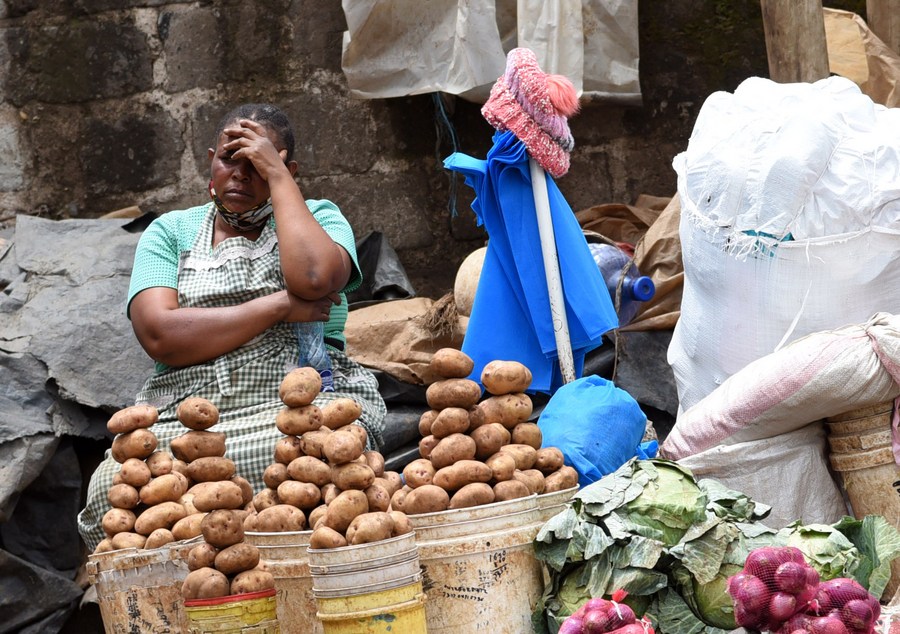Introduction
Picture yourself exploring the wonders of East Africa, where every sunrise brings the promise of new adventures. But as much as you crave excitement, you also want peace of mind. You’re wondering, Where can you travel safely, immersing yourself in vibrant cultures and breathtaking landscapes without a worry? Safest East African country is a place where hospitality is as warm as the sun and safety is woven into the very fabric of daily life.
Whether you’re wandering through the serene streets of Kigali, experiencing the coastal charm of Dar es Salaam, or marveling at Uganda’s lush beauty, these countries offer a perfect blend of security and adventure. Believe it or not, in these corners of East Africa, you may find not only safety but also the freedom to truly experience the magic of the continent. Ready to explore these safe havens?
1. Tanzania
Tanzania, known for its stunning landscapes and diverse wildlife, is a top choice for anyone looking to experience the wonders of East Africa. Its iconic destinations like Serengeti National Park and Mount Kilimanjaro make it a magnet for adventure seekers and nature lovers. With its rich cultural heritage and warm hospitality, Tanzania stands out as a destination where natural beauty and cultural experiences blend seamlessly.
Pros
- Access the Serengeti for witnessing the Great Migration.
- Explore the unique Ngorongoro Crater for diverse wildlife.
- Experience a wide range of wildlife, including the Big Five.
- Enjoy diverse landscapes, from savannahs to beaches.
- Climb Mount Kilimanjaro for an adventurous challenge.
- Interact with local tribes for cultural experiences.
- Choose from a variety of accommodation options.
- Visit multiple national parks with unique features.
- Participate in hot air balloon safaris over the Serengeti.
- Engage in excellent birdwatching with over 1,100 species.
Cons
- Endure high tourist numbers during peak season.
- Face high costs for park entry and activities.
- Plan carefully for the Great Migration timing.
- Navigate challenging road conditions during the rainy season.
- Manage potential overcrowding in popular parks.
- Deal with malaria risk, requiring prophylaxis.
- Pay additional fees for certain activities.
- Handle logistical challenges due to the country’s size.
- Experience variable accommodation quality in budget options.
- Address poaching issues affecting wildlife populations.
Tanzania offers a range of experiences, from world-class safaris to relaxing beach holidays. Serengeti National Park is famous for its migration of wildebeest and zebras, while Mount Kilimanjaro offers an iconic trekking challenge. Zanzibar provides a tropical escape with its beautiful beaches and rich cultural history. The Ngorongoro Crater, often referred to as a “Garden of Eden,” offers exceptional wildlife viewing in a unique geological formation.
2. Rwanda
Rwanda, known as the “Land of a Thousand Hills,” is a gem for those interested in both wildlife and stunning landscapes. Its commitment to conservation and impressive recovery from past conflicts make it a unique destination. Rwanda is particularly renowned for its mountain gorillas, and its clean, safe cities add to its appeal.
Pros
- Trek for unique gorilla encounters in Volcanoes National Park.
- Experience intimate wildlife encounters with other primates like chimpanzees.
- Explore diverse ecosystems, from rainforests to savannahs.
- Enjoy a more immersive and personal wildlife experience.
- Engage in cultural experiences with local communities.
- Benefit from excellent bird watching opportunities.
- Contribute to conservation efforts while visiting.
- Hike through stunning volcanic landscapes.
- Participate in adventure activities like trekking.
- Appreciate a less commercialized and more authentic safari experience.
Cons
- Pay high costs for gorilla trekking permits.
- Require physical fitness for challenging treks.
- Encounter limited opportunities for Big Five safaris.
- Navigate logistical challenges in remote areas.
- Deal with malaria risk in lowland regions.
- Face limited luxury accommodation options in some areas.
- Book early due to high demand for gorilla permits.
- Manage specialized and less varied wildlife experiences.
- Prepare for challenging weather, especially in mountainous areas.
- Experience potential difficulties accessing remote parks.
Rwanda offers you a unique focus on conservation and sustainable tourism, which sets it apart. You can find the mountain gorilla trekking experience to be a major highlight, offering you an intimate and unforgettable encounter with these endangered creatures. Kigali, the capital, is renowned for its cleanliness and orderliness, making it an enjoyable and convenient base for you to explore the country. Besides the gorillas, you can also enjoy the scenic beauty of Lake Kivu and immerse yourself in community-based tourism experiences.
3. Kenya
Opt for Kenya because it’s a dream destination for safari enthusiasts and adventure seekers like you. Consider it for its diverse landscapes, ranging from savannah to highlands, and its world-renowned national parks and reserves that offer you the quintessential East African experience. Choose Kenya to experience its vibrant culture and bustling cities, which add to its dynamic and unforgettable appeal.
Pros
- Experience the Great Migration in the Maasai Mara.
- Explore diverse ecosystems, from savannahs to coastlines.
- Enjoy excellent birdwatching with over 1,000 species recorded.
- Engage in cultural interactions with the Maasai.
- Choose from a wide range of accommodation options.
- Benefit from good accessibility via Nairobi’s international hub.
- Participate in hot air balloon safaris for a unique perspective.
- Visit iconic wildlife reserves, home to the Big Five.
- Combine beach and safari experiences for varied adventures.
- Discover vibrant cities with rich cultural heritage.
Cons
- Endure high tourist density during peak seasons.
- Pay high fees for park entry and activities.
- Navigate overcrowded parks, impacting the experience.
- Face variable quality in budget accommodations.
- Deal with political instability affecting travel plans.
- Encounter poaching issues in some areas.
- Experience less exclusivity compared to other destinations.
- Pay additional fees for certain activities, increasing costs.
- Manage malaria risk, requiring prophylaxis.
- Navigate crowded peak seasons, reducing wilderness appeal.
Kenya’s appeal for you lies in its diverse range of safari experiences and vibrant cultural heritage. You find the Great Migration in the Masai Mara to be a highlight, offering you an incredible wildlife spectacle. Nairobi gives you a cosmopolitan experience with its rich cultural and historical sites. If you’re looking to relax, the country’s beaches are perfect, while the highlands and rift valleys offer you adventure and stunning scenery.
4. Uganda
Uganda, often referred to as the “Pearl of Africa,” is celebrated for its lush landscapes and incredible wildlife experiences. It’s a lesser-known gem compared to its neighbors but offers unique opportunities for wildlife viewing, particularly with its mountain gorillas and chimpanzees.
Pros
- Trek for unforgettable gorilla encounters in Bwindi.
- Enjoy diverse ecosystems, from rainforests to savannahs.
- Spot other primates like chimpanzees in Kibale Forest.
- Experience rich cultural heritage with local communities.
- Engage in excellent birdwatching with numerous species.
- Explore scenic landscapes, including mountains and lakes.
- Benefit from less crowded parks for a more intimate experience.
- Participate in adventure activities like white-water rafting.
- Contribute to conservation efforts through responsible tourism.
- Visit Murchison Falls for breathtaking views and wildlife.
Cons
- Pay high costs for gorilla trekking permits.
- Require physical fitness for challenging treks.
- Navigate logistical challenges in remote areas.
- Deal with malaria risk, requiring prophylaxis.
- Experience limited luxury accommodation options.
- Face high demand for permits, requiring early booking.
- Manage a more specialized and less varied wildlife experience.
- Prepare for challenging weather conditions in mountainous areas.
- Encounter limited infrastructure in some regions.
- Experience long travel times between major attractions.
Uganda’s highlight is undoubtedly its gorilla trekking experiences, which attract wildlife enthusiasts from around the globe. Bwindi Impenetrable Forest and Mgahinga Gorilla National Park offer the chance to see mountain gorillas in their natural habitat. Kibale National Park is another draw if you have an interest in primates, particularly chimpanzees. Uganda’s landscapes are incredibly diverse, offering opportunities to explore everything from dense rainforests to picturesque lakes. The country’s rich biodiversity and warm, friendly people add to its appeal, making it a memorable destination.
5. Mauritius
Consider Mauritius if you’re looking for a tropical getaway with stunning beaches and a mix of cultures. This island nation offers luxurious resorts, crystal-clear waters, and a blend of African, Asian, and European influences. It’s a perfect choice for both relaxation and exploration.
Pros
- Stay in high-end resorts with top-notch amenities and stunning ocean views.
- Experience a unique cultural blend with influences from Africa, India, China, and Europe.
- Enjoy a variety of water activities, including snorkeling, diving, and boat trips.
- Explore the island’s scenic beauty, including volcanic landscapes and lush gardens.
- Indulge in a diverse range of culinary experiences.
- Benefit from a pleasant tropical climate year-round.
- Participate in eco-friendly tours and nature conservation efforts.
- Enjoy a high level of safety and low crime rates.
- Discover family-friendly activities and attractions.
Cons
- Face relatively high costs for accommodation and activities compared to other destinations.
- Handle tourist crowds, especially in popular resort areas.
- Lack traditional safari experiences that are available in mainland Africa.
- Be aware of the cyclone season that can affect travel plans.
- Navigate cultural differences as the island has a diverse population.
- Manage higher travel costs, including flights and transport within the island.
- Encounter inconsistent service quality in some less-touristy areas.
- Experience limited nightlife options outside major tourist hubs.
Mauritius offers a blend of luxury and natural beauty. Its beaches are famous for their powdery white sands and clear blue waters, perfect for relaxation and water sports. The island’s resorts cater to a range of preferences, from family-friendly options to romantic getaways. Mauritius also boasts a rich cultural tapestry reflected in its cuisine, festivals, and daily life. Its lush landscapes, including volcanic peaks and tropical gardens, provide a scenic backdrop for various outdoor activities.
6. Ethiopia
Ethiopia is a country of profound historical significance and unique cultural heritage. It’s one of the oldest civilizations in the world, offering a mix of ancient history, vibrant culture, and stunning landscapes. It’s an ideal destination for those interested in exploring historical sites and experiencing diverse cultures.
Pros
- Explore ancient historical sites like Lalibela’s rock hewn churches and Aksum’s ancient obelisks.
- Immerse yourself in Ethiopia’s rich cultural heritage, including unique festivals and traditions.
- Discover diverse landscapes, from the Danakil Depression to the Simien Mountains.
- Taste Ethiopia’s unique cuisine, including injera and doro wat.
- Observe a range of wildlife, including endemic species like the Gelada baboon.
- Engage with local communities and experience traditional Ethiopian life.
- Benefit from relatively low costs for accommodations and food.
- Enjoy stunning natural beauty, including highlands, lakes, and historical landmarks.
- Experience a generally safe travel environment, though some areas require caution.
- Learn about and witness Ethiopia’s ancient traditions and ceremonies.
Cons
- Navigate challenges with infrastructure, particularly in remote areas.
- Address health risks, including diseases like malaria.
- Manage travel logistics as some areas are less accessible.
- Overcome language barriers, as Amharic is the official language.
- Deal with limited tourist infrastructure in less-visited areas.
- Prepare for unpredictable weather, especially in highland areas.
- Respect local customs and cultural practices.
- Experience variability in service quality outside major tourist centers.
Ethiopia offers a rich tapestry of experiences, from its ancient historical sites to its vibrant culture. Lalibela’s rock-hewn churches are a highlight, showcasing Ethiopia’s historical significance and architectural ingenuity. The country’s diverse landscapes include the dramatic Simien Mountains and the otherworldly Danakil Depression. Ethiopian cuisine is another draw, offering distinctive flavors and dishes. Despite infrastructure challenges, Ethiopia’s unique cultural and historical experiences make it a fascinating destination.
Overview of the Safest East African Countries

East Africa offers a blend of safety, adventure, and cultural richness. You can explore stunning landscapes, from lush hills to pristine beaches, all while feeling secure. The region’s stability and welcoming atmosphere make it a top choice for travelers seeking both excitement and peace of mind.
You find vibrant cities that are clean and organized, providing a pleasant experience for visitors. The local people are known for their friendliness, adding to the overall sense of safety. Whether you’re interested in wildlife safaris, trekking adventures, or simply relaxing by the water, East Africa has it all.
Efforts to enhance security have paid off, making the region a favorite among tourists. The natural beauty, combined with the warm hospitality of the locals, ensures a memorable and secure journey. From bustling urban areas to serene natural reserves, there’s something for everyone.
So, which aspect of East Africa intrigues you the most?
How to Choose the Safest East African Countries
- Check current travel advisories and safety updates for each country.
- Evaluate health risks and necessary vaccinations for each destination.
- Look into crime rates and safety concerns in specific areas you plan to visit.
- Examine the quality of infrastructure and healthcare facilities available.
- Learn about local customs and cultural norms to ensure respectful travel.
- Assess the availability and quality of emergency services.
- Seek recent traveler reviews and experiences for up-to-date safety insights.
- Have a plan in place for emergencies and unexpected situations.
- Consider the safety and reliability of transportation options.
- Stay informed about local news and updates during your travel.
Pros and Cons of the Safest East African Countries
Pros
- Explore diverse wildlife in well-protected national parks.
- Enjoy reliable infrastructure and good safety standards.
- Experience vibrant local cultures and traditions.
- Benefit from stable political environments and low crime rates.
- Participate in eco-friendly and sustainable tourism practices.
- Access high-quality medical facilities in major cities.
- Discover beautiful landscapes with minimal risk.
- Stay in a range of accommodations from luxury to budget.
- Enjoy good transportation networks for ease of travel.
- Benefit from strong tourism support and friendly locals.
Cons
- Face higher costs for premium safety and security measures.
- Navigate occasional restrictions due to safety regulations.
- Encounter crowded tourist spots in popular destinations.
- Manage potential language barriers in some regions.
- Deal with higher prices in areas with strong safety standards.
- Experience limited access to remote areas with heightened security.
- Address the challenge of varying levels of service in less-visited areas.
- Adapt to diverse safety standards across different regions.
- Handle potential changes in travel advisories or safety recommendations.
- Overcome occasional logistical challenges due to increased security measures.
What to Watch Out For

- Stay alert to petty crime, especially in crowded or tourist-heavy areas.
- Be aware of health risks and ensure you have the necessary vaccinations and health precautions.
- Prepare for potential infrastructure issues, particularly in remote or rural areas.
- Monitor safety concerns and follow local advice, especially in politically sensitive regions.
- Watch out for weather conditions that may affect travel plans, such as sudden rain or extreme temperatures.
- Prepare to encounter language barriers and consider learning basic phrases or having a translator app handy.
- Avoid tourist traps that can inflate costs and diminish the quality of your experience.
- Ensure you are aware of the quality and availability of health facilities, particularly if traveling to remote areas.
- Plan your travel logistics carefully, especially for remote or less-developed regions where transportation may be limited.
Pro Tips
- Conduct thorough research on your destination, including safety updates, travel advisories, and local customs.
- Plan your itinerary and accommodations in advance to secure the best options and avoid last-minute issues.
- Keep a reliable means of communication, such as a local SIM card or an international roaming plan.
- Pack according to the climate and activities planned, and include essentials like a first aid kit and any necessary medications.
- Learn a few basic phrases in the local language to facilitate communication and show respect.
- Adhere to safety guidelines and advice provided by local authorities and your travel insurance provider.
- Opt for reputable tour operators and services to ensure quality and safety.
- Keep hydrated and maintain good health practices to prevent illness, especially in tropical climates.
- Keep your valuables secure and be cautious of your surroundings, especially in crowded places.
- Remain flexible and adaptable to unexpected hanges or challenges during your travels.
Recap
East Africa is a region rich with diverse experiences and natural beauty. Tanzania, with its world-renowned safaris and Kilimanjaro, offers iconic wildlife encounters and stunning landscapes. Rwanda stands out for its mountain gorillas and commitment to conservation, making it a unique destination for wildlife enthusiasts.
Kenya is a safari paradise with a mix of beaches, wildlife, and vibrant cities. Uganda, known for its gorilla and chimpanzee trekking, presents a less-traveled but equally rewarding adventure. Mauritius provides a tropical escape with luxury resorts and beautiful beaches, while Ethiopia offers a journey through ancient history and diverse cultures.
When choosing the safest East African countries, consider factors like travel advisories, health risks, infrastructure, and local customs. Each country has its own set of pros and cons, so understanding these will help you make an informed decision. Always stay updated on safety guidelines, be prepared for health risks, and respect local cultures to ensure a smooth and enjoyable travel experience.
By keeping these tips and considerations in mind, you are well-prepared to explore the incredible destinations East Africa has to offer while ensuring your safety and enjoyment throughout your journey.














